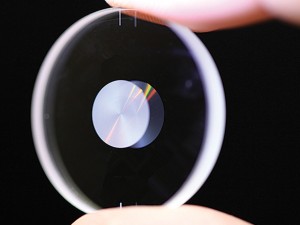 Computer scientist Peter Kazansky at the University of Southampton, in England, has some words for the ages. He and a group of collaborators wrote them in quartz crystal using new optical techniques that could preserve the text for millennia. The message, which consisted of the abstract of the paper announcing the work, is stored as two types of alterations in the way quartz glass refracts light. The combination of the two allows for data-storage densities as high as 360 terabytes per disc, or more than 7000 times today’s 50-gigabyte double-layer Blu-ray capacity.
Computer scientist Peter Kazansky at the University of Southampton, in England, has some words for the ages. He and a group of collaborators wrote them in quartz crystal using new optical techniques that could preserve the text for millennia. The message, which consisted of the abstract of the paper announcing the work, is stored as two types of alterations in the way quartz glass refracts light. The combination of the two allows for data-storage densities as high as 360 terabytes per disc, or more than 7000 times today’s 50-gigabyte double-layer Blu-ray capacity.
There’s always a catch, though. Reading the message requires an electron microscope, and the process may never provide faster access to stored data than existing technology can. This and similar over-the-horizon memory research may someday improve big-data storage, but such systems aren’t an easy fit with today’s data-storage needs, experts say. Improved density and durability are both helpful, but readability and the capacity to rewrite data in a different format might be more important.
Read the rest of this news story in this month’s issue of IEEE Spectrum: [html] [pdf] and see my related blog post.